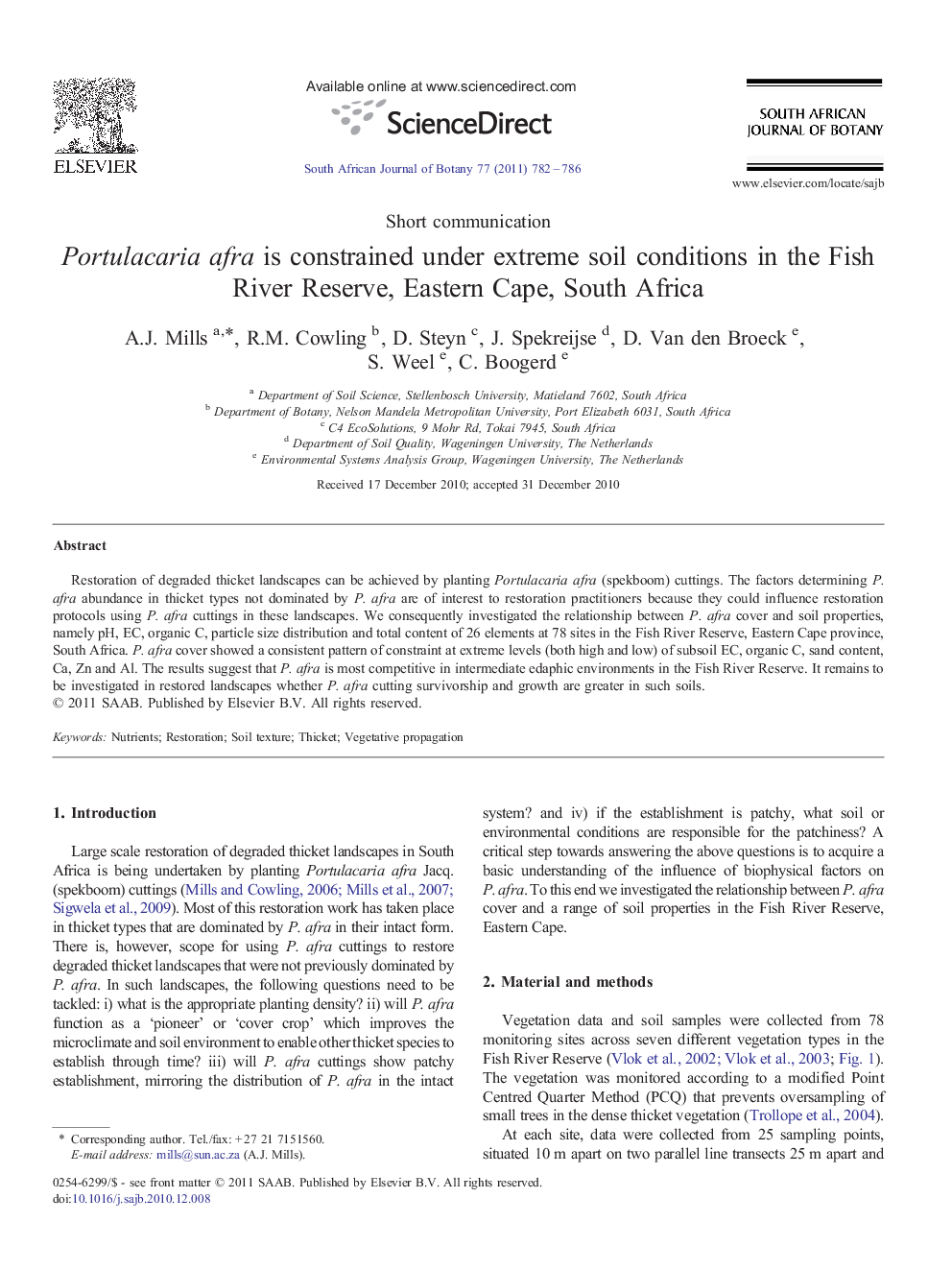| Article ID | Journal | Published Year | Pages | File Type |
|---|---|---|---|---|
| 4521226 | South African Journal of Botany | 2011 | 5 Pages |
Restoration of degraded thicket landscapes can be achieved by planting Portulacaria afra (spekboom) cuttings. The factors determining P. afra abundance in thicket types not dominated by P. afra are of interest to restoration practitioners because they could influence restoration protocols using P. afra cuttings in these landscapes. We consequently investigated the relationship between P. afra cover and soil properties, namely pH, EC, organic C, particle size distribution and total content of 26 elements at 78 sites in the Fish River Reserve, Eastern Cape province, South Africa. P. afra cover showed a consistent pattern of constraint at extreme levels (both high and low) of subsoil EC, organic C, sand content, Ca, Zn and Al. The results suggest that P. afra is most competitive in intermediate edaphic environments in the Fish River Reserve. It remains to be investigated in restored landscapes whether P. afra cutting survivorship and growth are greater in such soils.
Research Highlights► P. afra abundance varies across the Fish River Reserve according to soil conditions. ► Extremes of subsoil EC, organic C, sand content, Ca, Zn and Al constrain P. afra. ► This suggests P. afra is most competitive in intermediate soil environments. ► These findings could influence restoration protocols using P. afra cuttings.
